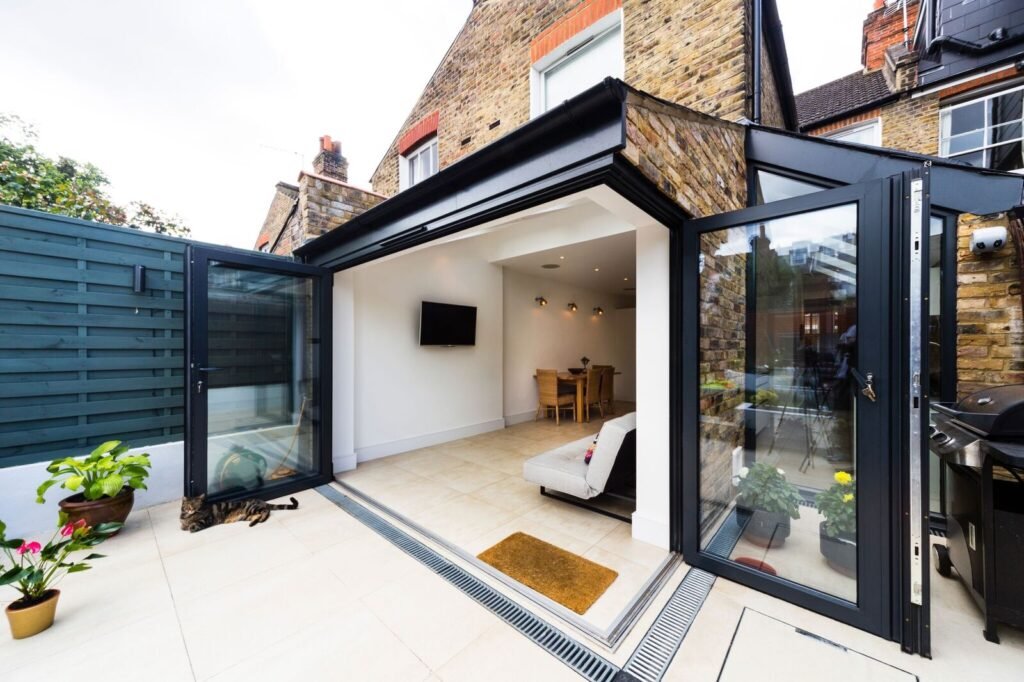
EXTENSIONS
Building an extension to a house is an increasingly popular choice for homeowners seeking to maximize the potential from their property space. With fees and stamp duty to consider as well as the upheaval entailed with buying a new house and continually increasing property prices, an extension can be seen as a more economical option.
The type and scale of house extension varies greatly according to the homeowner’s requirements, budget and the feasibility of the site.
TYPES OF EXTENSION
GARAGE
A garage is a common type of single-storey extension that is constructed to adjoin an existing building, and can be useful for keeping a vehicle inside, storage space, and so on.
For more information, see How to build a garage.
PORCH
This is a single-storey attachment to the front of a house. Due to their relatively small size they may not require planning permission (although they may in a conservation area or for a listed building). Building regulations approval may be required if the porch is not separated from the house by an internal door and is heated, or if there are structural, accessibility or drainage implications.
For more information, see How to build a porch.
CONSERVATORY
These are simple single-storey structures, usually made of glazing and a UPVC frame, although they can also be timber or aluminium. They may have a low-level brick wall around their perimeter upon which the framework site. The type and size of the conservatory will determine whether planning permission or building regulations approval is required or not.
See Conservatory for more information.
ORANGERY
Also known as a sunroom, an orangery is similar to a conservatory but has a solid roof and walls as well as glazing. This tends to make them more expensive than a conservatory, but sturdier and better at retaining heat. Similar planning permission and building regulations rules apply as for conservatories.
SINGLE-STOREY EXTENSION
A single-storey extension is built adjoining the existing house. The method of connection requires careful consideration, in particular, openings between the extension and the existing building, junctions with the roof structure, the positions of flues and drains, and so on. Planning permission may not be required in all instances, but building regulations approval will be.
TWO-STOREY/MULTI-STOREY EXTENSION
The same considerations will be relevant as for a single-storey extension, although the junctions and structure are likely to be more complicated and planning permission is very likely to be required.
OVER-STRUCTURE EXTENSION
This is where an extension is built over the top of an existing structure, most commonly a garage. In terms of ensuring stability, new foundations and inner leaf wall construction may be required since most garages have only single-skin brickwork. Since the quality of foundations cannot be guaranteed, suitable examination must be undertaken to ascertain the extent to which additional work needs to be done.
BASEMENT
A basement is part of a building that is either partially or completely below ground level.
In cities such as London, due to the demand for housing, the price of land and the cost of moving, basements are being constructed or converted for living space. This is causing concern in some areas where very large, multi-storey basements are begin constructed, which can cause significant disruption to neighbors over a long period. As a result, some planning restrictions are being introduced. See Basements in buildings for more information.
The planning situation will depend on the exact nature of the proposed development and so it is advisable to contact the Local Planning Authority for pre-application advice.
Building regulations are applicable to the construction of new basements, and will cover areas including ventilation, drainage, ceiling heights, damp proofing, electrical wiring, water supplies, means of escape, and so on.
